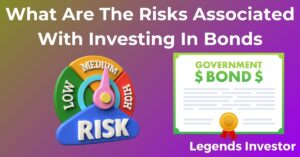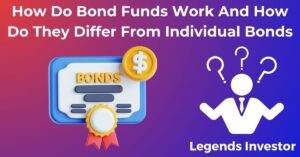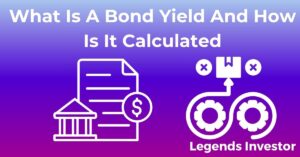Introduction to Bonds: Your Secure Path to Income Investment
Investing can be a complex journey, and finding the right balance between risk and reward is crucial for any investor. Bonds, often considered a lower-risk investment, provide a reliable stream of income and can be an essential part of a diversified portfolio. This guide will help you understand what bonds are, how they work, and how to incorporate them into your investment strategy.
Explanation of What Bonds Are
Bonds are debt securities issued by various entities to raise capital. When you purchase a bond, you are essentially lending money to the issuer in exchange for periodic interest payments and the return of the principal amount at the bond’s maturity date.
Types of Entities That Issue Bonds
- Government Bonds: Issued by national governments, these are considered some of the safest investments.
- Municipal Bonds: Issued by states, cities, or other local government entities to fund public projects.
- Corporate Bonds: Issued by companies to raise capital for business operations, expansions, or other purposes.
- Agency Bonds: Issued by government-affiliated organizations, such as Fannie Mae or Freddie Mac in the U.S.
Why Bonds Are Considered a Lower-Risk Investment
Bonds are generally considered lower risk compared to stocks because they provide predictable interest payments and return of principal. Government and high-quality corporate bonds, in particular, are less volatile and offer more stability, making them a safer investment option for conservative investors.
Decoding Bond Terms: Speak the Language of Investors
Understanding Key Terminology: Coupon Rate, Maturity, Yield
- Coupon Rate: The annual interest rate paid by the bond issuer, expressed as a percentage of the bond’s face value.
- Maturity: The date when the bond issuer must repay the principal amount to the bondholder.
- Yield: The return on investment for a bond, considering the annual interest payments and any gains or losses if the bond is purchased at a discount or premium.
The Difference Between Bond Price and Bond Value
- Bond Price: The current market price at which the bond is trading.
- Bond Value: The face value or principal amount that will be repaid at maturity.
How to Read a Bond Table
Bond tables provide crucial information about individual bonds, including the issuer, coupon rate, maturity date, current yield, and bond price. Learning to read and interpret these tables is essential for making informed investment decisions.
The Anatomy of a Bond: Understanding its Components
The Principal/Face Value of a Bond
The principal, or face value, is the amount the bondholder will receive from the issuer at maturity. This is typically $1,000 for corporate bonds but can vary for other types of bonds.
Role and Impact of Interest Rates on Bonds
Interest rates have an inverse relationship with bond prices. When interest rates rise, bond prices fall, and vice versa. This is because existing bonds with lower interest rates become less attractive compared to new bonds issued at higher rates.
What the Maturity Date Means for Bond Investors
The maturity date is the point at which the bond’s principal is repaid to the investor. Bonds with longer maturities generally offer higher yields to compensate for the increased risk of changes in interest rates and inflation over time.
Entering the Bond Market: A Beginner’s Guide
Steps to Purchasing Your First Bond
- Research: Understand the different types of bonds and their risk profiles.
- Choose a Broker: Select a brokerage firm that offers bond trading services.
- Open an Account: Set up a brokerage account if you don’t already have one.
- Decide on Investment Amount: Determine how much you want to invest in bonds.
- Place an Order: Use your brokerage account to purchase bonds through either a brokered market or directly from the issuer.
Brokered Bonds Versus Direct Purchase
- Brokered Bonds: Purchased through a brokerage firm, often with a variety of bond options and access to the secondary market.
- Direct Purchase: Buying bonds directly from the issuer, typically during the initial offering. This can sometimes offer lower fees.
Considerations When Choosing Bonds
Evaluate the bond’s credit rating, interest rate, maturity, and how it fits into your overall investment strategy. Consider diversification to spread risk across different issuers and bond types.
Risk and Reward: Evaluating Bonds for Your Portfolio
Assessing the Credit Risk of Bond Issuers
Credit risk refers to the possibility that the bond issuer will default on its payments. Credit rating agencies like Moody’s, S&P, and Fitch provide ratings that indicate the creditworthiness of bond issuers.
Interest Rate Risk and Market Conditions
Interest rate risk is the potential for bond prices to decline due to rising interest rates. Understanding current market conditions and economic trends can help you manage this risk.
Diversification Benefits of Including Bonds in Your Investment Portfolio
Bonds can provide stability and income to your portfolio, reducing overall volatility. Diversifying across different types of bonds can further mitigate risk.
The Lifecycle of a Bond: From Purchase to Maturity
What Happens After You Buy a Bond
Once you purchase a bond, you will receive regular interest payments (usually semi-annually) until the bond matures. At maturity, you will receive the bond’s face value.
Reinvestment Options for Interest Payments
Consider reinvesting interest payments to compound returns. Options include buying more bonds, investing in a bond fund, or placing the money in a high-yield savings account.
Making a Strategic Exit: Selling Before Maturity
You can sell your bond in the secondary market before it matures. Be aware that bond prices fluctuate with interest rates and market conditions, which can affect the sale price.
Bond Strategies: Maximizing Returns Within Your Comfort Zone
Laddering Strategy for Managing Maturity Dates
Laddering involves purchasing bonds with staggered maturity dates. This strategy provides regular income and reduces the risk of reinvesting all bonds at a time of unfavorable interest rates.
When to Consider Zero-Coupon Bonds
Zero-coupon bonds are sold at a discount and do not pay periodic interest. Instead, they mature at face value, offering a lump-sum payment. These can be a good option for long-term investment goals.
Utilizing Bonds in Retirement Planning
Bonds can provide a stable income stream and preserve capital, making them an essential component of retirement portfolios. Consider a mix of short-term and long-term bonds to balance income and growth.
Navigating Taxes and Bonds: Keeping More in Your Pocket
Tax Implications of Owning Bonds
Interest income from bonds is generally subject to federal income tax and, in some cases, state and local taxes. Be aware of the tax treatment for different types of bonds.
Municipal Bonds as a Tax-Free Investment
Interest earned from municipal bonds is often exempt from federal taxes and may be exempt from state and local taxes if you live in the issuing state. This makes them an attractive option for high-income investors.
Strategies for Tax-Efficient Bond Investing
Consider investing in tax-advantaged accounts like IRAs or 401(k)s. Municipal bonds and bond funds focused on tax-free income can also help reduce your tax burden.
Staying Informed: The Evolving World of Bond Investing
Keeping Up with Interest Rate Trends
Interest rates impact bond prices and yields. Stay informed about Federal Reserve policies, economic indicators, and global financial trends to make educated investment decisions.
Impact of Economic Cycles on Bond Investing
Economic cycles affect interest rates and bond markets. During economic expansions, interest rates tend to rise, while recessions usually see lower rates. Adjust your bond investments based on these cycles.
Continuing Education for Bond Investors
Bond markets are complex and constantly evolving. Continuously educate yourself through financial news, investment courses, and consultations with financial advisors.
Conclusion: Embarking on Your Bond Investment Journey
Bonds offer a secure and reliable path to income investment, balancing risk and reward within your portfolio. Understanding the intricacies of bonds—from terminology to strategies—empowers you to make informed decisions and achieve your financial goals. Stay informed, keep learning, and consider professional advice as you navigate the bond market.
Embark on your bond investment journey with confidence, knowing that you have the knowledge and tools to secure a stable financial future. Happy investing!



